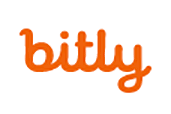10 Underrated Recruiting Tools You Should Start Using Today

Welcome toTop 10, Recruiter.com’s weekly rundown of the best of the best in recruiting! Every Friday, we release a list of some of our favorite people, things, and ideas dominating the industry. From awesome tech tools and cool companies to great books and powerful trends, no stone in the recruiting space will be left unturned.
This Week: Top 10 Underrated Recruiting Tools
We all know the big names in recruiting – your LinkedIns, your Bullhorns, your Kenexas, etc. For today’s installment of Top 10, we decided to dig a little deeper to compile a list of the best recruiting tools that seem to fly under the radar. You may have heard of some of these tools in the job market already, but chances are you aren’t using them. If you are using them, you’re probably not using them to their fullest extent.
1. AngelList

When we put out the call to our network for suggestions for this list, AngelList got a lot of support, with more respondents citing this website than any other tool.
Wondering why? Here’s what Arya Ghavami, founder and CEO of Focus: Map of Your World, had to say: “Without a doubt, the single most underrated hiring tool is AngelList. AngelList uses an applicant tracking system called Track that provides an all-in-one searching, recruiting, interviewing, and hiring platform. It’s incredibly easy to use, far more focused and customizable than LinkedIn, and even provides a better list of candidates across job types.”
2. We Work Remotely

We Work Remotely is a board that specializes in remote work opportunities. As remote work options gain popularity, We Work Remotely and job boards of its ilk will become more and more valuable to employers.
“I’ve had a lot of success finding great remote opportunities as a job candidate and finding amazing remote talent as an employer,” says Diane Elizabeth, the founder of Skin Care Ox. “I’ve even had a lot of success using We Work Remotely to find expert temporary freelance consultants for shorter-term projects. I’ve found that a lot of highly skilled individuals who are not working remotely browse the site to find potential remote opportunities, so it’s a way to find key team members.”
3. Facebook

Sure, Facebook isn’t underutilized as far as social media networks go, but its new job posting feature definitely isn’t being leveraged as widely as it should. There’s been a lot of hype surrounding the feature, but recruiters and hiring managers shouldn’t stop at reading the articles. Being able to post job ads directly to company’s Facebook page and accept applications through Facebook’s Messenger feature makes sourcing a lot easier.
As Brad M. Shaw, president and CEO of Dallas Web Design Inc., pointed out when he nominated Facebook for our list, “Facebook has by far the largest talent pool online, with over 1.8 billion users.”
4. Cammio

There are a lot of video recruiting platforms out there, but Cammio is one of the best.
“It’s all cloud-based, and you can select from live, automated, or video pitch interviews,” says Scott Wesper, hiring manager for Arch Resources Group. “It’s a really great tool for pre-screening your candidates in an innovative way that’s enjoyable for the candidate, the recruiter, and the hiring manager. In today’s digital age, it makes sense to go beyond the CV when assessing a candidate. Instead of just relying on someone’s work experience and education, you can get a feel for their personality and cultural fit, which can often shed light on qualified prospects who are overlooked.”
5. PeerPilot

PeerPilot takes an interesting approach to recruiting. Groups of candidates collaborate on business cases, so employers can assess candidates based not on their resumes, but on their performances on relevant tasks. Candidates participate anonymously, too, which helps eliminate bias from the process.
6. Virtual Career Fairs by West Unified Communications

Why deal with the hassles of traditional career fairs – booking space, arranging for reps to attend, competing with other companies for attention – when you could hold one virtually? Not only do virtual career fairs help employers reach larger audiences, but they also build employer brand awareness and attract talented candidates for a relatively low cost.
7. TextRecruit

For most people, text messaging is the preferred communication method. In fact, it’s the most used data service in the world. So why is so much recruiting communication still carried out via email? TextRecruit is here to change that, offering a central platform from which recruiters can manage text message communications with all their candidates.
8. Bitly

Generally thought of as a marketing tool, Bitly can also be quite useful for recruiting efforts.
As Taylor Dumouchel, digital marketing specialist at Peak Sales Recruiting, explains, “To keep our prospective candidates engaged, we conduct surveys, distribute resources, share marketing content, and much more. Since we don’t like to make any guesses as to what our candidates like to read and when they’d like to receive it, we use Bitly to measure each resource’s and communication’s performance. Using the insights from Bitly, we’re able to develop a deeper understanding of our candidates’ behavior and gain insight into how to strategically maintain those relationships.”
9. OpenCATS

A completely free and open-source ATS, OpenCATS’ main benefit is its flexibility.
“OpenCATS can be deeply customized and modified to meet your needs even more effectively,” says Sean Fitzpatrick, president of TalentMap.
10. Canvas

Canvas is a text-based interviewing platform, which makes screening multiple candidates much more convenient. Also helpful is that Canvas automatically compiles transcripts of the conversations, which recruiters can share with their teams.

